Visiting Mexico is an immersion into a vibrant tapestry of rich culture, stunning landscapes, and warm hospitality. From the bustling streets of Mexico City adorned with historic landmarks and vibrant markets to the ancient ruins of Teotihuacan and Chichen Itza, Mexico showcases a profound connection to its indigenous past. The country’s coastal regions boast some of the world’s most beautiful beaches, like those in Cancun and Tulum along the Riviera Maya, inviting travelers to relax on white sands or explore underwater wonders while snorkeling or diving in the crystal-clear waters. With a diverse culinary scene, colorful festivals, and a welcoming spirit, Mexico captivates visitors with its authenticity and charm, offering an unforgettable blend of history, natural beauty, and cultural richness.
Mexico City
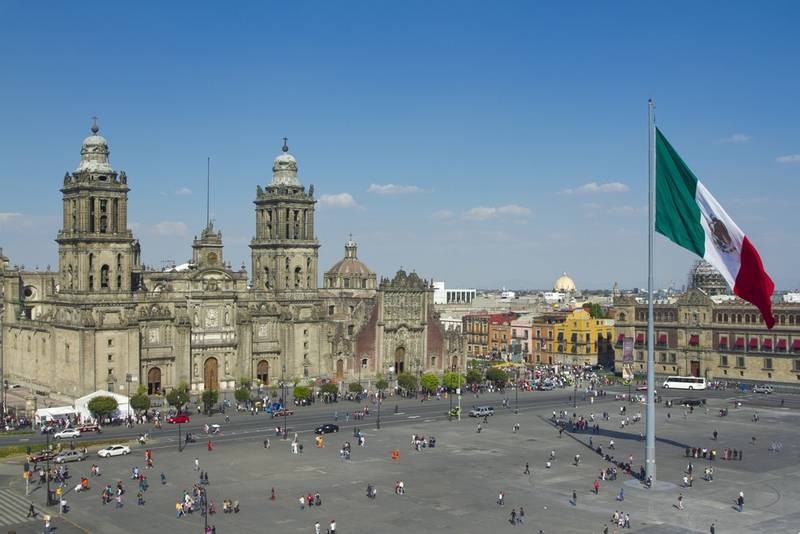 The Zocalo, former center of the Aztec capital Tenochtitlan. dubassy/shutterstock |
Mexico City unveils a vibrant cultural tapestry, from the historic Zócalo, one of the world’s largest city squares, surrounded by iconic landmarks like the Metropolitan Cathedral and the National Palace, to the ancient wonders of Teotihuacan just outside the city. Exploring Teotihuacan’s majestic pyramids, such as the Pyramid of the Sun and the Pyramid of the Moon, offers a glimpse into Mexico’s pre-Columbian past. Additionally, a leisurely excursion through the enchanting Xochimilco canals, adorned with colorful trajineras (traditional boats), provides a serene and festive atmosphere, showcasing the city’s cultural heritage.
Cancun, Yucatan
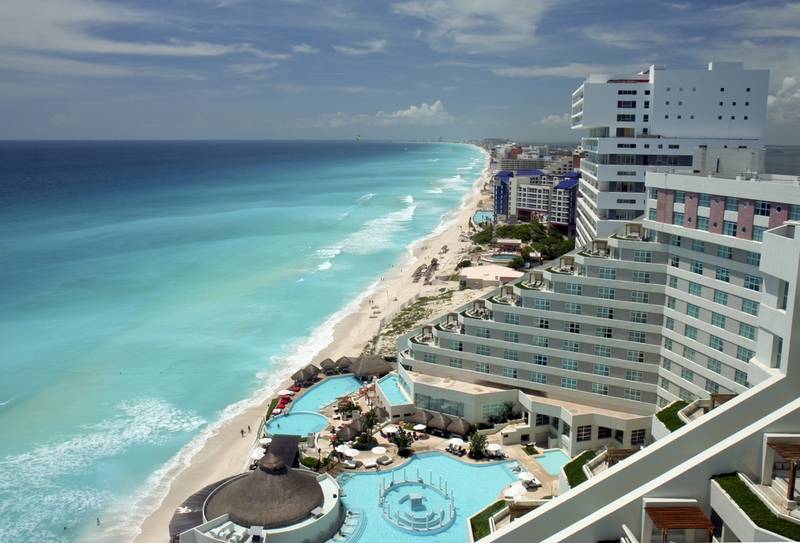
The coast of Cancun. mike-liu/shutterstock
Cancun, nestled along the stunning Caribbean coastline of Mexico’s Yucatan Peninsula, is renowned for its breathtaking white-sand beaches and vibrant nightlife. Beyond its turquoise waters and luxurious resorts, Cancun offers archaeological sites like Chichen Itza and Tulum, making it an ideal destination for both relaxation and cultural exploration.
Chitzen Itza, Yucatan
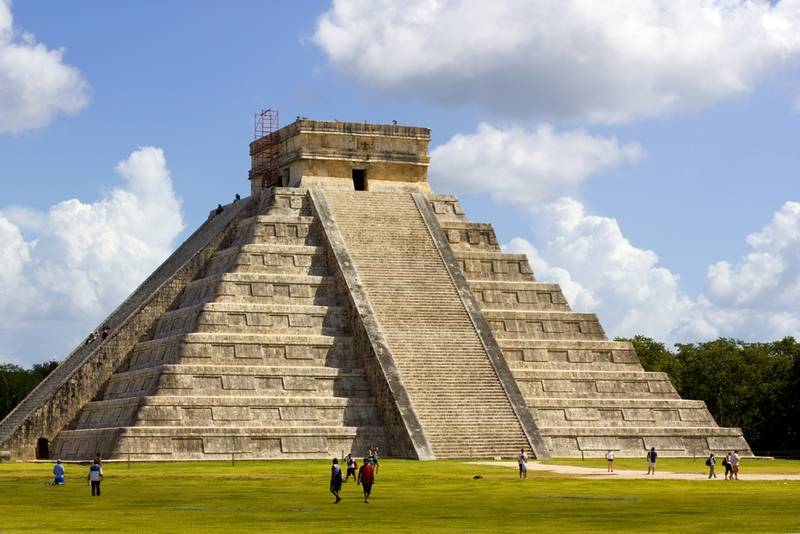 Kukulkan Pyramid. julia-dementyeva/shutterstock |
Chichen Itza, a UNESCO World Heritage Site, stands as one of Mexico’s most iconic Mayan archaeological sites, showcasing ancient structures like the Kukulkan Pyramid, an astronomical marvel. Located approximately 120 miles west of Cancun, Chichen Itza’s historical significance and well-preserved ruins make it a must-visit destination for travelers seeking insight into Mayan culture and architecture.
Cozumel Island, Yucatan

Spotted Eagle Ray in Cozumel. joanne-weston/shutterstock
Cozumel Island, located off the eastern coast of Mexico’s Yucatan Peninsula, boasts stunning coral reefs and crystal-clear waters, making it a paradise for snorkeling and diving enthusiasts. Visitors can find an array of accommodation options along the island’s coastline, with resorts and hotels predominantly located in San Miguel de Cozumel, offering convenient access to beaches, water activities, and a vibrant local culture.
Tulum, Yucatan
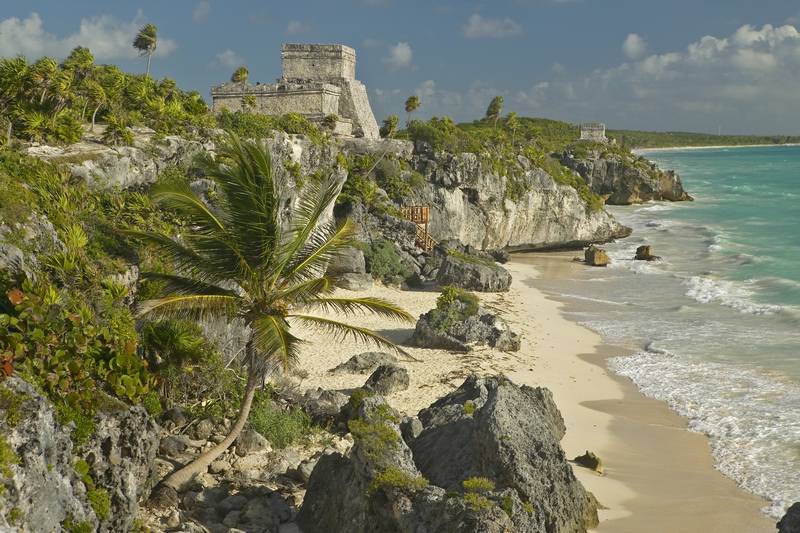 El Castillo ruin. spirit-of-america/shutterstock |
Tulum, on the Caribbean coast of Mexico’s Yucatan Peninsula, is an ancient Mayan walled city overlooking the turquoise waters of the Caribbean Sea. This archaeological site served as a major port city for the Mayan civilization and is renowned for its well-preserved ruins, including the iconic clifftop Castillo and the Temple of the Frescoes.
Merida, Yucatan
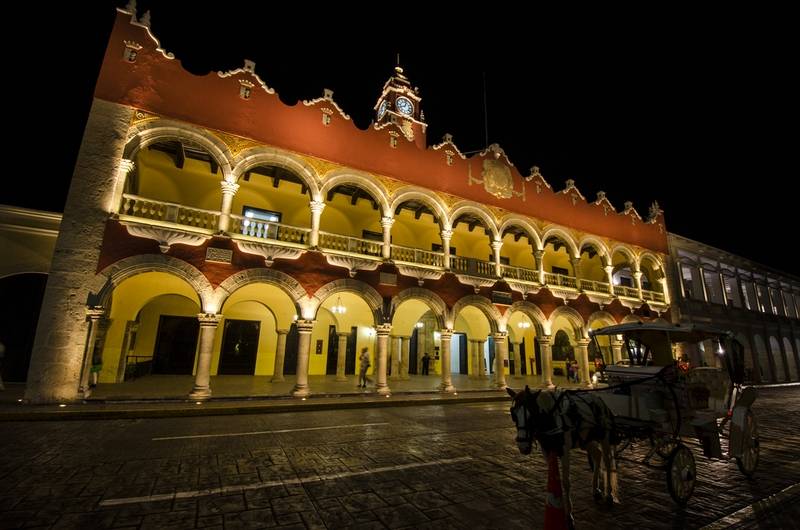
rafael-martin-gaitero/shutterstock
Merida, the vibrant capital of Mexico’s Yucatan state, showcases a unique blend of colonial charm and Mayan heritage. Known for its colorful architecture, bustling markets, and lively cultural scene, Merida offers visitors a delightful experience steeped in history, with nearby attractions like the archaeological sites of Uxmal and Chichen Itza adding to its allure. It was founded by Spanish Conquistadors in the 1540s on top of the Mayan city of T’ho.
Monarch Butterfly Biosphere Reserve, Michoacan

ncg/shutterstock
The Monarch Butterfly Biosphere Reserve, located in Mexico, serves as a vital sanctuary for millions of monarch butterflies during their annual migration. It is wintering ground for up to 1 billion butterflies. The best time to visit this awe-inspiring natural wonder is between late October and early March when the monarchs cluster in the reserve’s fir forests. Nearby towns like Angangueo and Zitácuaro offer various lodging options and provide convenient access to the reserve.
Oaxaca City, Oaxaca
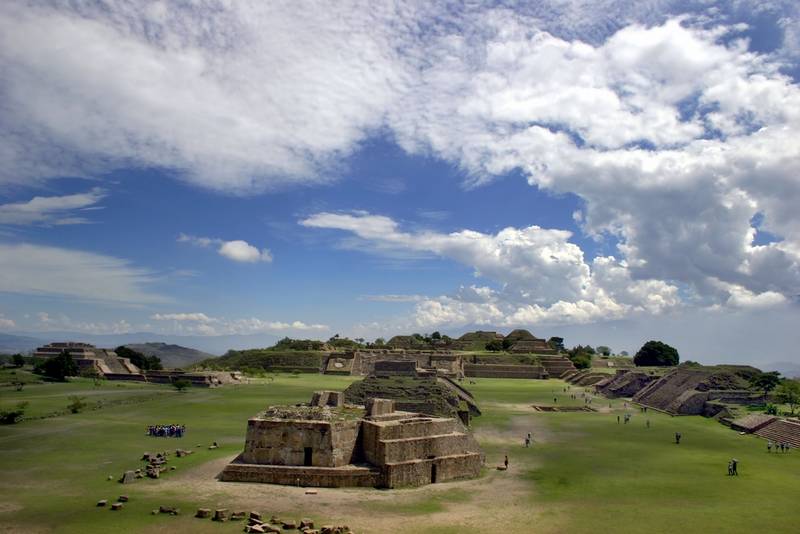
Monte Alban in Oaxaca. Site of large city from 100 BC to 300 AD. terence/shutterstock
Oaxaca City, nestled in the heart of Mexico’s Oaxaca state, is a cultural gem steeped in indigenous traditions and colonial charm. Renowned for its vibrant markets, exquisite cuisine, and well-preserved architecture, the city offers visitors an enriching experience, including exploring archaeological sites like Monte Albán and immersing in the diverse arts and crafts scene.
Puerto Escondido, Oaxaca
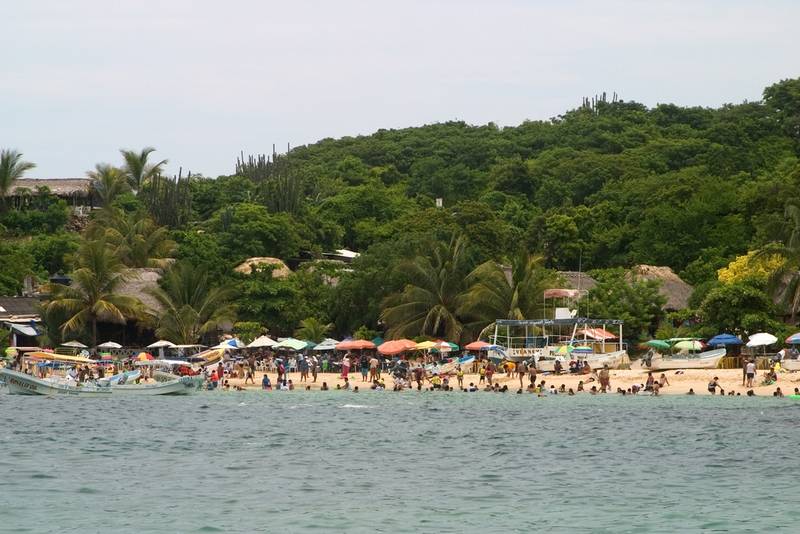
micheal-levy/shutterstock
Puerto Escondido in Oaxaca, Mexico, is a captivating beach town celebrated for its stunning Pacific coastline and excellent surfing conditions. Known for its relaxed atmosphere and beautiful beaches like Zicatela and Playa Carrizalillo, Puerto Escondido attracts surfers, beach lovers, and travelers seeking a laid-back coastal retreat.
Puebla City, Puebla
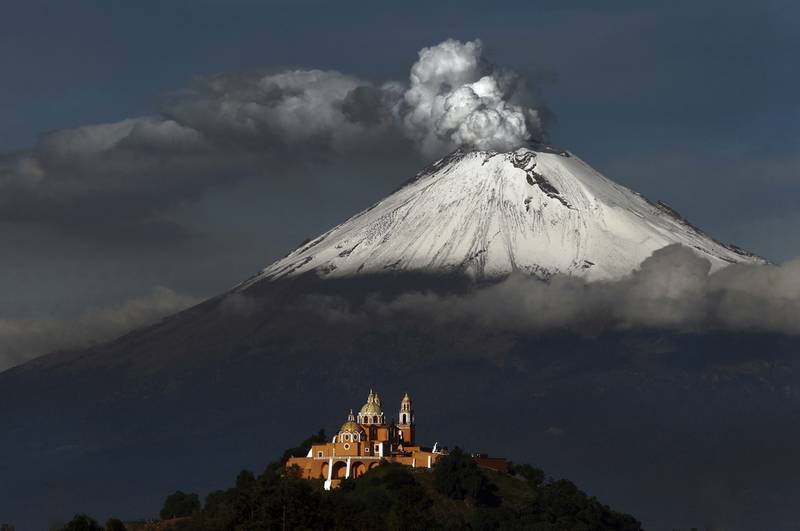
Puebla is surrounded by volcanoes and ice capped mountains. cristobal-garciaferro/shutterstock
Puebla City, located in central Mexico, is renowned for its well-preserved colonial architecture and vibrant cultural heritage. This historic city boasts a UNESCO World Heritage Site, its colonial center featuring stunning buildings like the Puebla Cathedral and beautifully decorated Talavera-tiled facades, offering visitors a captivating glimpse into Mexico’s colonial past.
Palenque, Chiapas
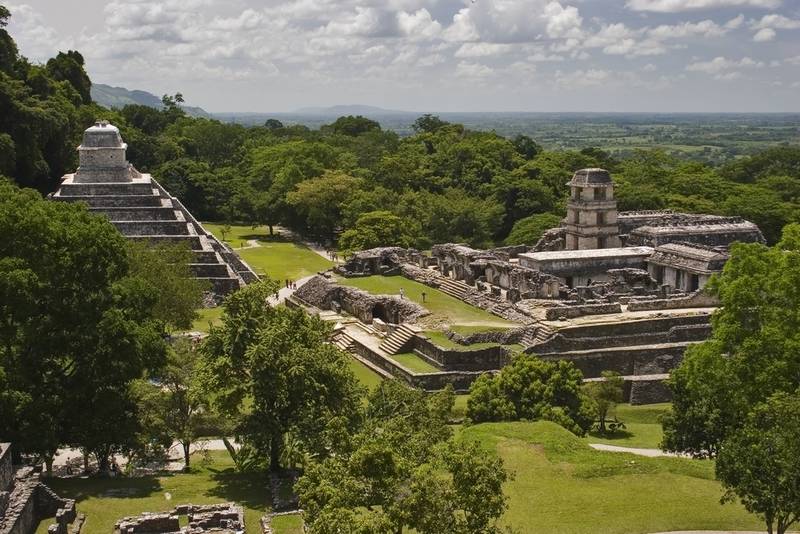 peter-von-bucher/shutterstock |
Palenque, situated in the lush jungle of Chiapas, Mexico, is home to the renowned archaeological site of the ancient Mayan city. The archaeological zone showcases magnificent temples and pyramids, such as the Temple of the Inscriptions, offering a glimpse into the sophistication of Mayan civilization. Nearby accommodations range from hotels and eco-lodges in Palenque town to jungle resorts, providing visitors with convenient access to the archaeological site and the surrounding natural beauty.
San Cristobal de las Casas, Chiapas
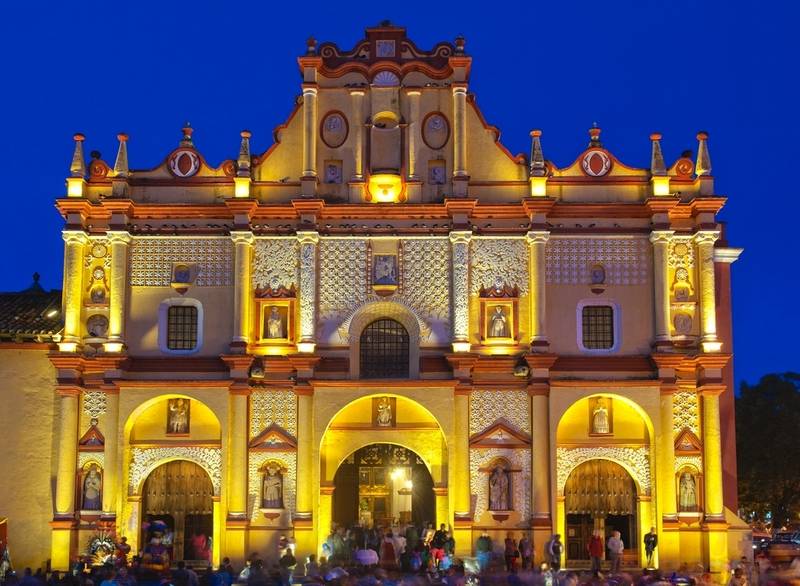
Cathedral in San Cristobal de las Casas. pablo-h-caridad/shutterstock
San Cristóbal de las Casas, in the highlands of Chiapas, Mexico, is a charming colonial town steeped in indigenous culture and traditions. With its cobblestone streets, vibrant markets, and colorful architecture, San Cristóbal captivates visitors, offering a glimpse into the region’s rich history and providing a gateway to nearby indigenous communities and stunning natural attractions.
Copper Canyon, Chihuahua
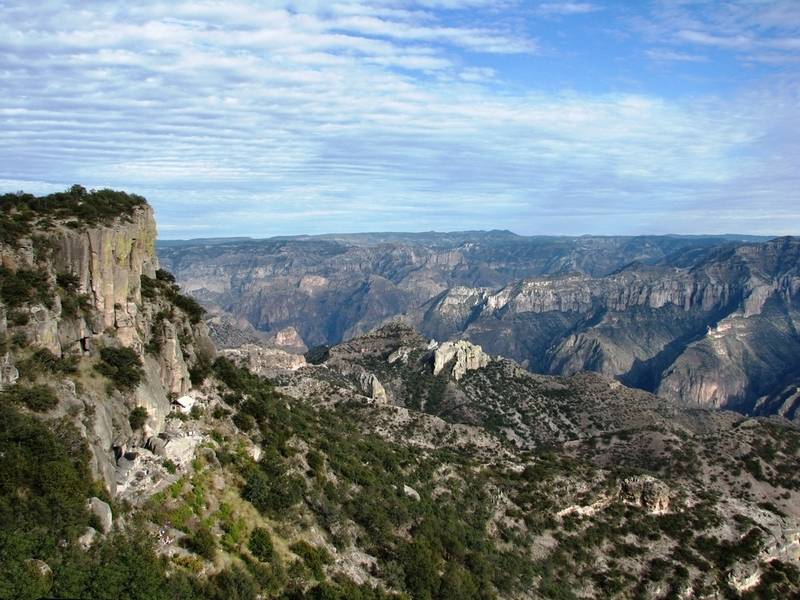
fiona-young-brown/shutterstock
Copper Canyon in Chihuahua, Mexico, is a breathtaking series of canyons deeper and wider than the Grand Canyon, offering stunning vistas and hiking opportunities. Towns like Creel, Divisadero, or Batopilas offer a range of lodging options and provide convenient access to explore the region.
Guanajuato City, Guanajuato
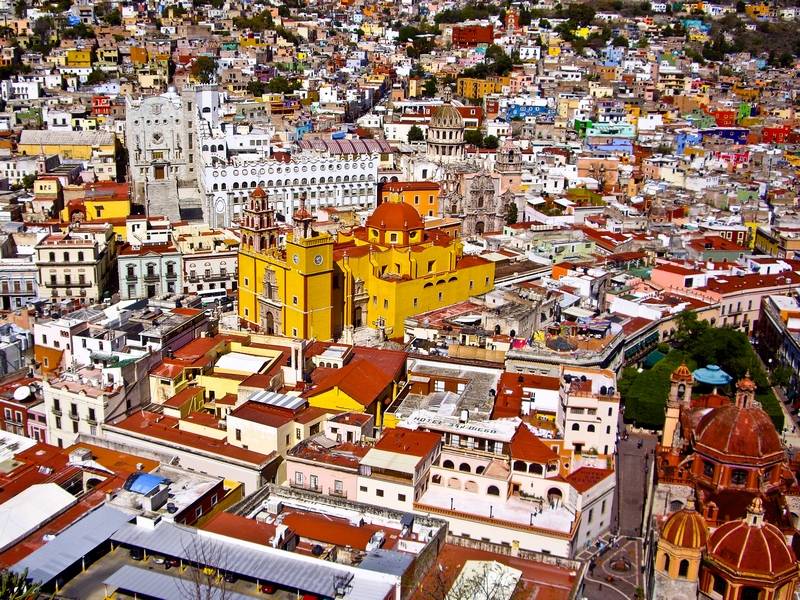
emattil/shutterstock
Guanajuato City, a UNESCO World Heritage Site in central Mexico, is renowned for its captivating colonial architecture, colorful streets, and rich cultural heritage. This historic city, known for its picturesque plazas, subterranean streets, and vibrant arts scene, offers visitors a charming ambiance to explore its museums, theaters, and iconic landmarks like the stunning Juárez Theater. A former silver mining town, it is regarded by many to be the most beautiful city in Mexico.



